In the realm of fishing, there exists a practice that defies convention and embraces raw, primal instinct: noodling. It’s not your typical angler’s pursuit with rods, reels, and bait. Instead, it’s a hands-on approach, where fishermen forego traditional tools and rely solely on their grit, determination, and a willingness to dive deep into the murky waters.
The History of Noodling
Early Origins
Noodling traces its roots back to ancient civilizations, where indigenous peoples utilized this technique to harvest fish from the depths of rivers and streams. It was a skill passed down through generations, steeped in tradition and reverence for nature’s bounty.

Cultural Significance
Across different cultures, noodling has held varying degrees of importance. In some communities, it was not merely a means of sustenance but also a rite of passage, symbolizing bravery and resilience in the face of adversity.
The Technique of Noodling
Finding the Right Spot
Noodlers are adept at identifying prime locations for their unconventional fishing endeavors. They seek out underwater holes, crevices, or hollow logs where catfish, the primary target, may lurk.
Bravery and Courage
Unlike traditional fishing methods, noodling requires a level of fearlessness that borders on audacity. It’s about plunging into the unknown, confronting the darkness beneath the water’s surface, and grappling with whatever lies within.
The Thrill of the Chase
There’s an undeniable thrill that comes with the hunt, the adrenaline rush of feeling for elusive prey with bare hands. Each encounter is a test of skill and nerve, a dance between man and beast beneath the waves.
Safety Concerns
Potential Risks
While noodling offers an unparalleled adventure, it’s not without its dangers. From sharp rocks and hidden obstacles to encounters with snapping turtles or venomous creatures, there are numerous hazards lurking beneath the surface.
Precautionary Measures
To mitigate these risks, seasoned noodlers emphasize the importance of caution and preparation. They advise wearing sturdy gloves to protect against cuts and bites, as well as maintaining situational awareness at all times.
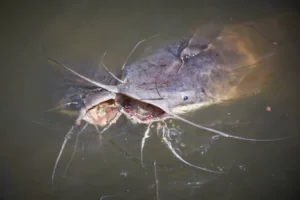
The Appeal of Noodling
Connection with Nature
Noodling is more than just a fishing technique; it’s a primal connection to the natural world. It’s about immersing oneself in the elements, feeling the water’s cool embrace, and communing with the creatures that dwell within.
Sense of Achievement
There’s a profound sense of accomplishment that comes with successfully noodling a catfish. It’s not just about catching dinner; it’s about overcoming fear, pushing boundaries, and proving one’s mettle against the wild.
Bonding Experience
For many, noodling is a communal activity, a chance to bond with friends and family amidst the serenity of the great outdoors. It’s a shared adventure, filled with laughter, camaraderie, and the shared triumphs and tribulations of the hunt.
Environmental Impact
Conservation Efforts
As awareness of environmental conservation grows, noodlers are increasingly mindful of their impact on aquatic ecosystems. Many advocate for sustainable practices, releasing caught fish unharmed and minimizing disturbance to their habitats.
Sustainable Practices
Some regions have implemented regulations to ensure the long-term viability of noodling as a cultural tradition. These measures aim to strike a balance between preserving indigenous practices and safeguarding the delicate balance of aquatic ecosystems.
The Future of Noodling
Legalization and Regulation
The legality of noodling varies from place to place, with some states embracing it as a cherished tradition and others imposing strict regulations or outright bans. As interest in this ancient practice grows, there’s a push for greater recognition and acceptance on a broader scale.
Continued Tradition vs. Modernization
As with many age-old customs, noodling faces the challenge of adapting to a rapidly changing world. While some purists advocate for preserving its traditional essence, others embrace modern innovations, such as specialized gear or techniques, to enhance the experience.
Conclusion
Noodling is more than just a fishing technique; it’s a visceral experience that taps into humanity’s primal connection to the natural world. It’s about bravery, camaraderie, and a deep reverence for the mysteries that lie beneath the surface. As we navigate an ever-evolving landscape, let us cherish and preserve this ancient tradition, ensuring that future generations can continue to revel in its timeless allure.
FAQs
- Is noodling legal everywhere? Noodling legality varies by region, with some areas embracing it while others impose restrictions or bans. It’s essential to familiarize oneself with local regulations before attempting this technique.
- Are there any safety precautions for noodling? Absolutely! It’s crucial to wear protective gear, such as sturdy gloves, and maintain awareness of potential hazards in the water, such as sharp rocks or hidden obstacles.
- Can noodling harm the fish population? When practiced responsibly, noodling has minimal impact on fish populations. Many noodlers release caught fish unharmed, contributing to the conservation of aquatic ecosystems.
- What is the biggest challenge of noodling? One of the greatest challenges of noodling is overcoming fear and embracing the unknown. It requires a level of bravery and courage that few other fishing methods demand.
- Is noodling suitable for beginners? While noodling can be exhilarating for experienced anglers, it’s not recommended for beginners without proper training and guidance. It’s essential to learn from seasoned noodlers and understand the risks involved before attempting this technique.

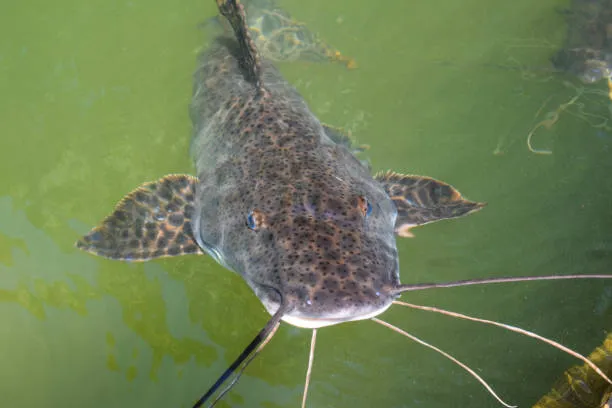

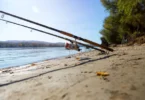
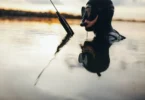
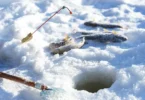


Leave a Comment